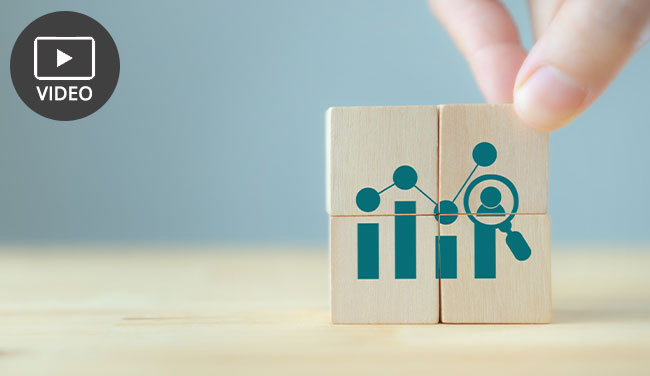28th June 2022

Understanding customer behaviour is key to improving interactions and business outcomes.
Customer analytics helps businesses analyse past actions, predict future behaviour, and tailor their approach to meet customer needs effectively.
To find out more, we asked David Samuel, Chief Product Officer at Contexta360, and Sean McIver, Product Owner at MaxContact, to define customer analytics.
Watch the video below to hear David and Sean define what customer analytics is:
With thanks to the following people for contributing to this video:
Customer analytics is the process of gathering and analysing customer data to understand behaviours, preferences, and trends, as David outlines:
“This capability enables users to gain specific insights into their customers, so they understand how they will behave when interacting with your organization, so that you can respond accordingly.”
It provides contact centres with valuable insights that help improve customer interactions and decision-making.
One key area within customer analytics is speech analytics, which focuses on analysing conversations to extract meaningful patterns.
“Customer analytics is a broader field in which speech analytics sits. It’s insights into customers. And generally speaking, it falls into four main categories.” – Sean
These four key areas are:
This involves looking at past customer behaviour, such as purchase history or service interactions, to identify trends and patterns, or as Sean puts it:
“You’ve got what happened. So the customer historically has done ABC.”
This step seeks to understand the reasons behind customer actions, and it examines factors that may have influenced decisions, such as product quality, customer service experiences, or marketing efforts.
“You’ve got almost a diagnosis side of things.
You can then utilize that to understand what’s likely to happen from an individual customer, or customer base side of things.” – Sean
Using historical data, contact centres can anticipate future customer behaviours as Sean explains:
“Using all of that information, you can then do something that’s a bit more predictive.
This includes identifying likely purchasing trends, potential churn risks, and preferred communication channels.
With predictive insights, contact centres can refine their approach to customer engagement.
“This allows you to modify the way in which you interact with customers so that you’re reaching them at the right time, in the right space where they are, and with the right people speaking to them, or communicating with them.” – Sean
This includes adjusting messaging, timing, and channels to increase response rates, boost customer loyalty, and improve overall satisfaction.
By understanding customer habits and preferences, contact centres can tailor their strategies to offer more relevant and timely interactions.
“I guess an example of that may be, the deeper you understand your customers’ buying habits and lifestyle preferences, the more accurate your predictions of future buying behaviours will be.
And then you’ll be more successful at delivering the relevant offers, if that’s your business, that would attract them rather than offering things that will turn them away.
So in turn, it should help to increase response rates and loyalty and ultimately return on investment (ROI)” – David
Effective use of customer analytics leads to better customer experiences, higher engagement, and improved return on investment (ROI).
If you are looking for more great insights from the experts, check out these next:
Reviewed by: Xander Freeman